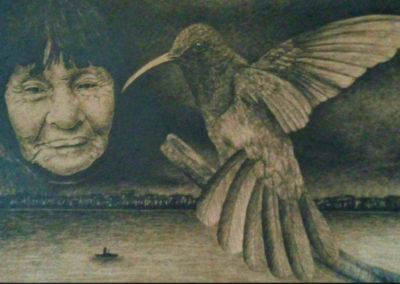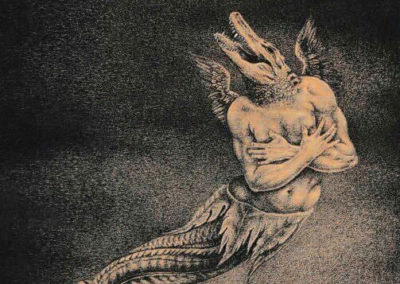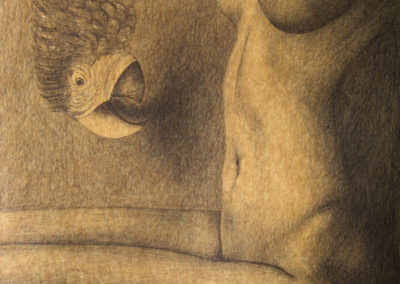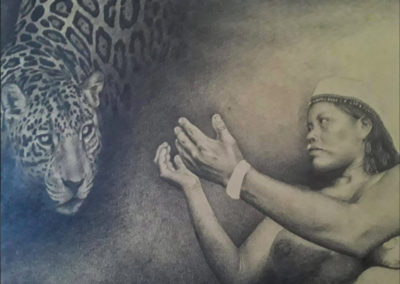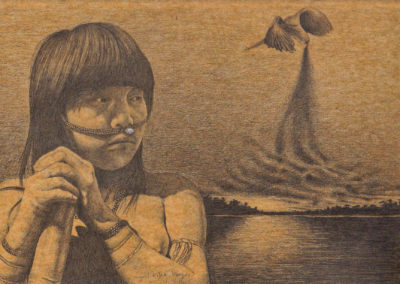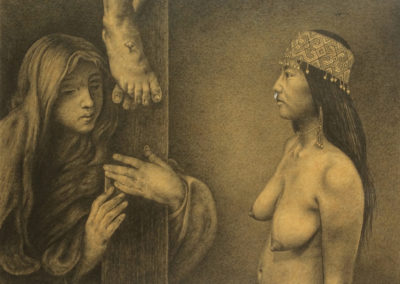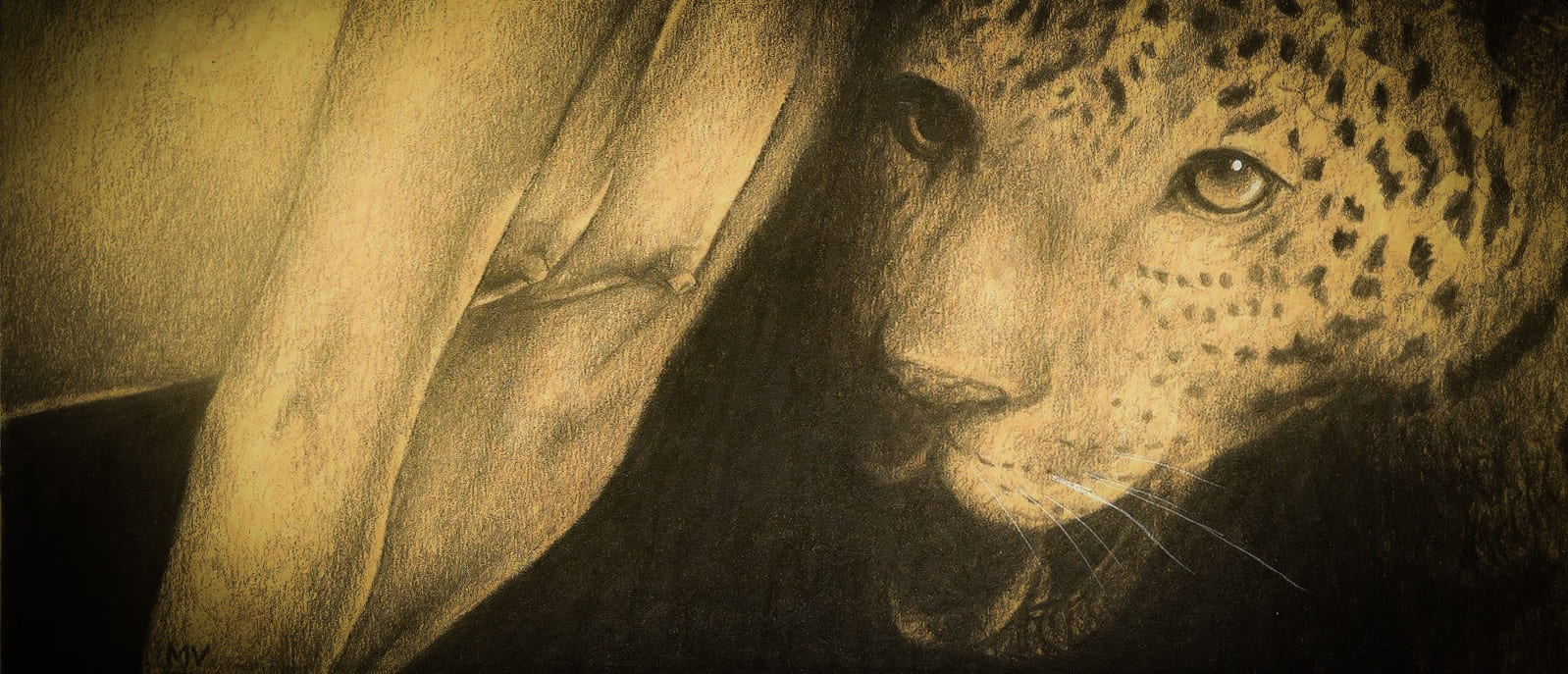
Miguel Vilca Vargas
Miguel Vilca Vargas elabora dibujos enigmáticos inspirados en la jungla, combinando figuras arquetípicas de la historia del arte europeo con criaturas antropomorfas y espíritus de la jungla.
Esta fusión inicia un profundo diálogo entre experiencias antiguas y eventos distantes incrustados en nuestro subconsciente.
El arte de Miguel captura vívidamente el choque entre el mundo occidental y el modo de vida amazónico, brindando una perspectiva matizada sobre la confluencia cultural dentro de sus creaciones.
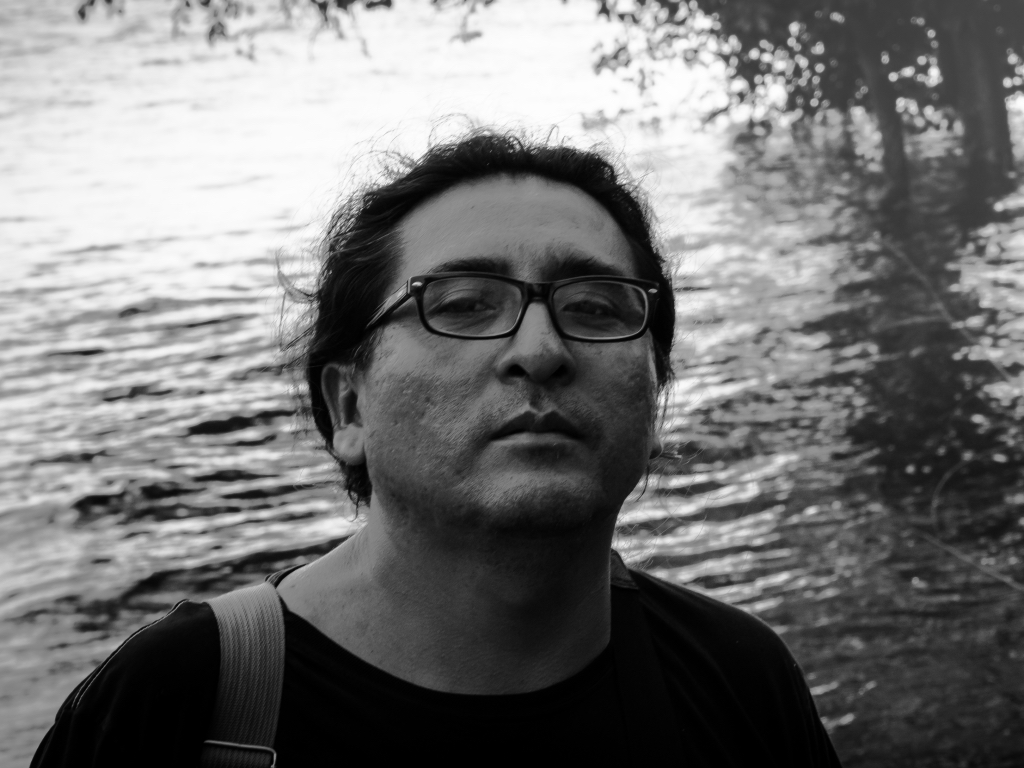
Óbras

Pucallpa – un lugar curioso, en aquel entonces un sitio escondido en la selva, hoy día una ciudad, con apariencia una aldea gigantesca, rodeado de la vegetación tropical exuberante.
Situado a la orilla del brazo lateral del Amazonas, el Ucayali, en su curso superior. Varadero de los viejos barcos y canoas que salen contra la corriente hacia los lugares lejanos a la civilización.
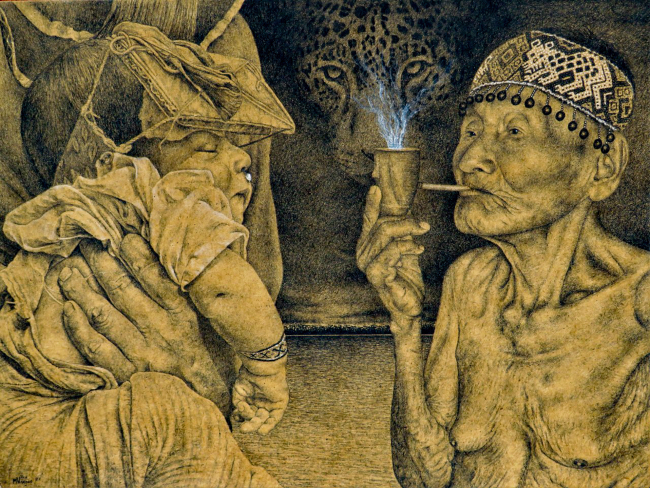
Lugar, donde vive y crea sus obras el artista Miguel Vilca Vargas, conocido allí con el nombre Búho.
Su cuadros figurativos, inspirados por la selva y su ambiente, misteriosos e imaginarios retratos de los antepasados o de los espíritus terroríficos de la selva, llegan a ser una sonda profunda hacia la antigua experiencia y acontecimientos remotos, guardados bajo la superficie en nuestra subconsciencia.
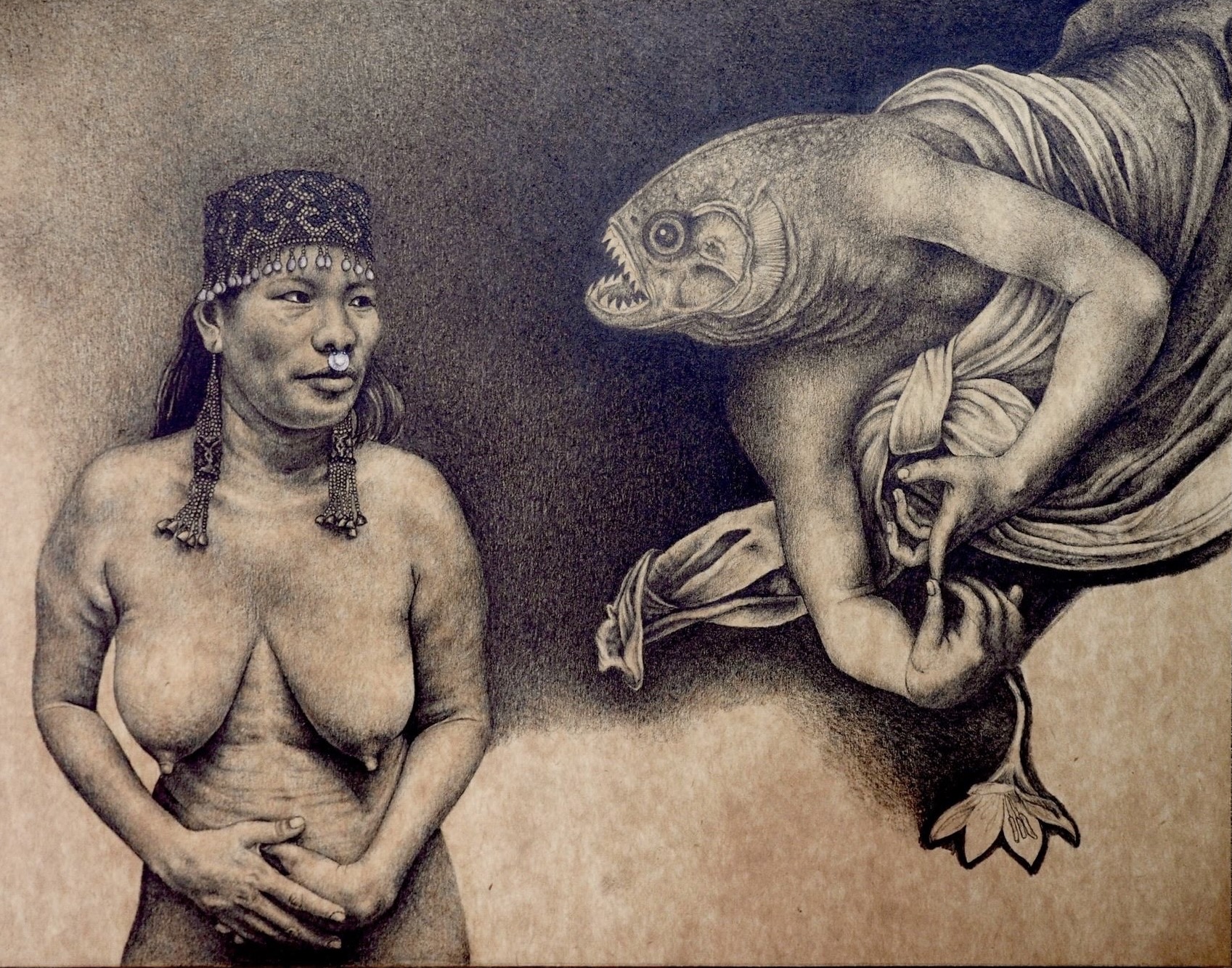
Búho no dibuja lo que vemos a nuestro alrededor, el intenta expresar lo que hay en nuestro interior. Sus cuadros son un intento de hacer ver la profundidad de nuestra propia alma.
Es un intento de captar y expresar algo que dormita en alguna parte del interior de cada uno de nosotros.

Para ello me aprovecho de algunas mis fantasias y experiencias de la selva, recuerdos de mi mismo como el peregrino por mi propio laberinto interno.
Las obras callan y a la vez hablan del pasado sobre el presente y el futuro en una lengua universal, las palabras humanas son inútiles. Desde el principio de todas las épocas el tema principal es el hombre y la mujer – el principio masculino y femenino. EI punto común es la creación, los dos principios son atraídos hacia el y repelidos a la vez .

EI tiempo en esos parajes no significa nada, allí reina la vaguedad y humedad del aire que alcanza casi 100 %.El bosque vetusto emana una atmósfera ancestral. Sus árboles, más viejos que la civilización moderna, y sus especies vegetales, presentes desde antes del hombre, crean un ambiente cargado de colores, rincones oscuros y sonidos espeluznantes.
Los cantos de pájaros ocultos, las zarabandas de mosquitos traviesos y las nubes de zancudos zumbando alegremente completan la experiencia sensorial, junto a una humedad tan intensa que hace inútil secarse el sudor.Un lugar, donde uno se hunde al pasado, al mundo de los antepasados silenciosos. Lugar lleno de los espíritus y miedo de lo desconocido.

Un lugar desconcertante. Por una parte lleno de vida y vegetación exuberante, por otra calado por la muerte que es ubicua pero sin la que la vida carecería del sentido. Espacio, donde aun vive gente, que gracias a su tradición ancestral y experiencias transmitidas de una generación a otra, es capaz de comunicar con otros mundos, inaccesibles para nosotros, civilizados. Un lugar, que aun no distrae a uno con los productos de la civilización moderna, lugar, donde uno puede ser con si mismo, lugar, donde los nativos no conocen que significa la palabra aburrirse.

Búho no pretende presentar la vida tal, como la percibimos con la vista superficial en nuestro mundo «civilizado» ni intenta burlarse de ella o explicar alguna postura religiosa, no crea espectáculos como reacción a una sensación pasajera y no muy profunda.
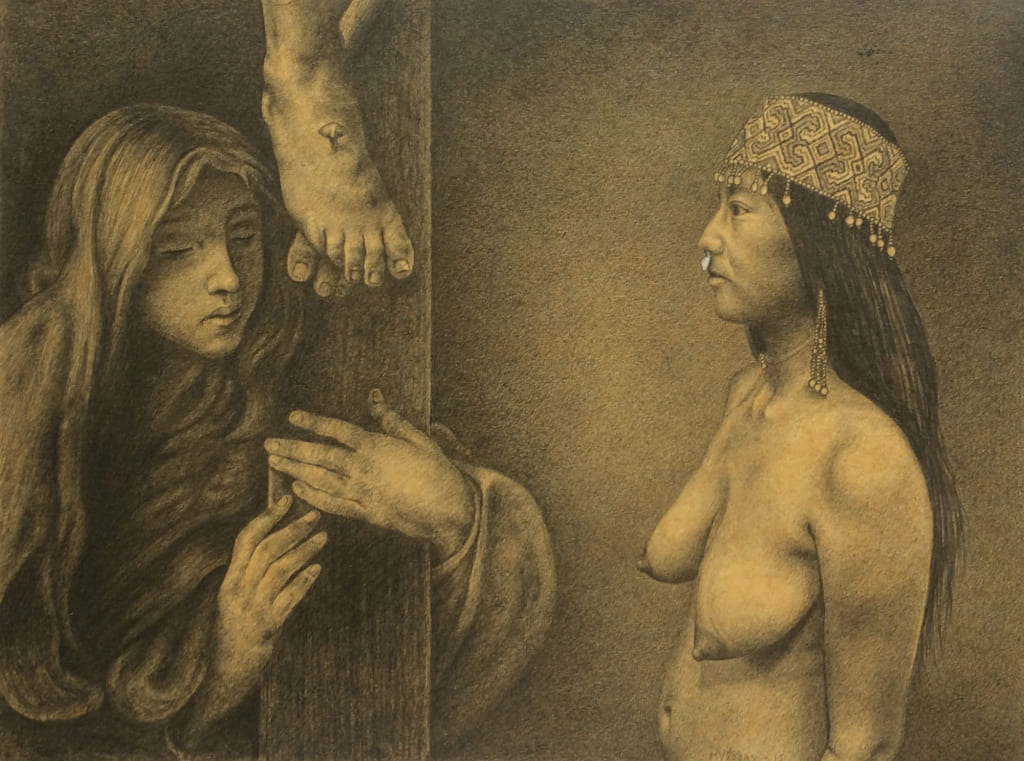
EI tema clave de su obras es EI Hombre y su inspiración es el ambiente en el que vive. Pero percibe muy bien que; «EI significado de las cosas en el espacio verde siempre se crea en la relación con el desarrollo de la civilización moderna, que quiere decir que se acerca el fin de la cultura nativa pura».



